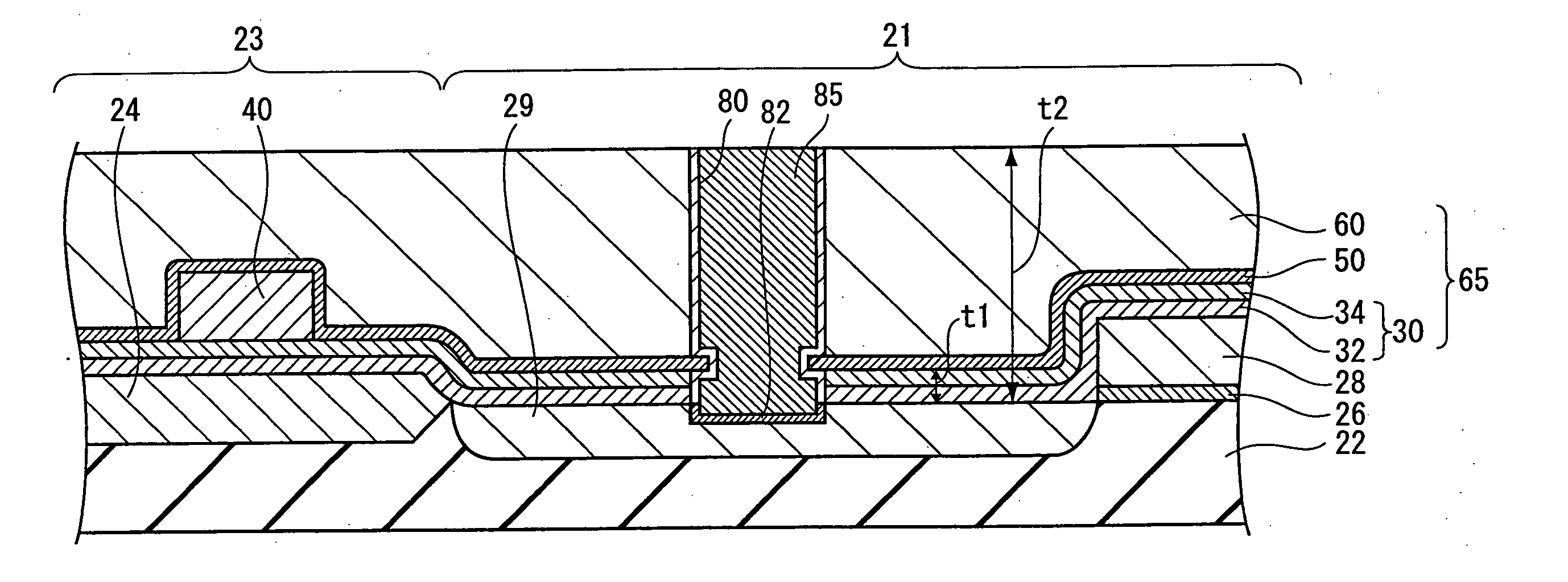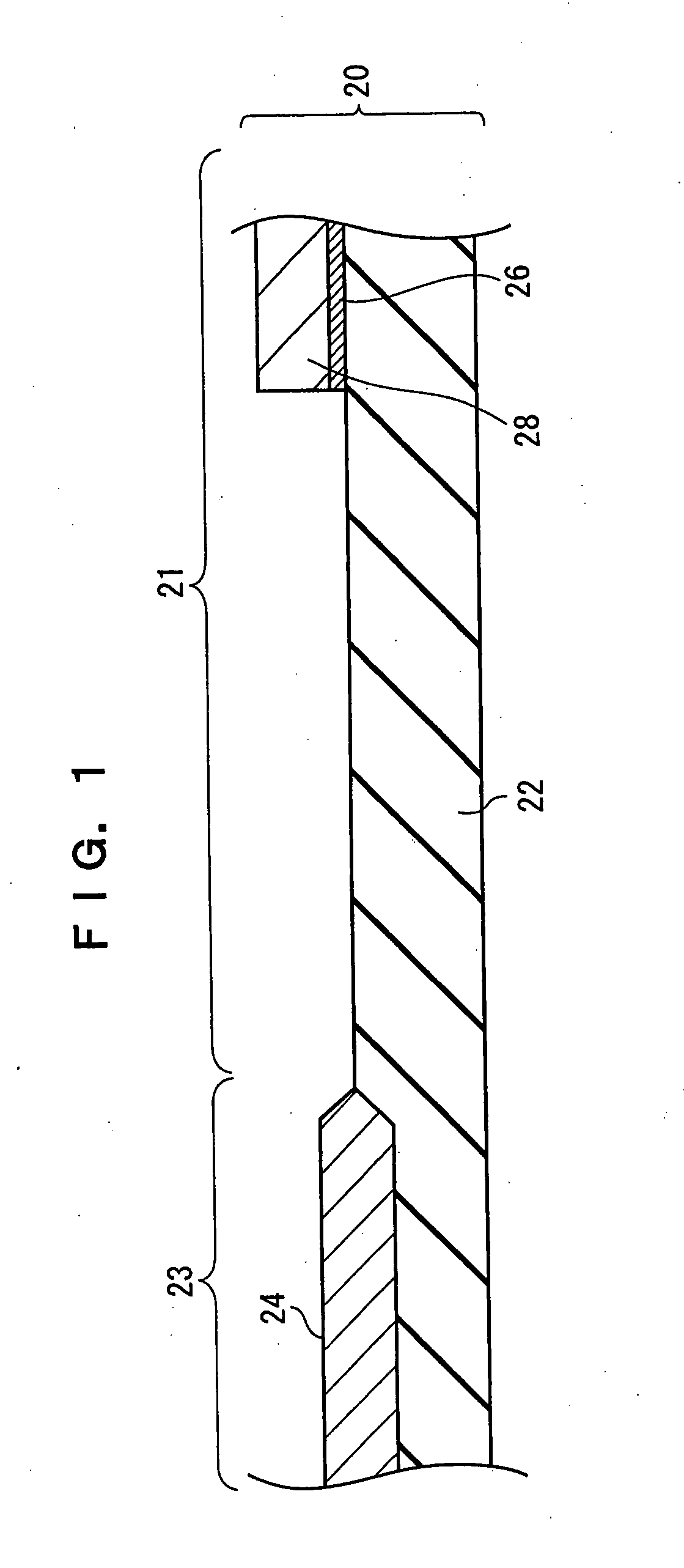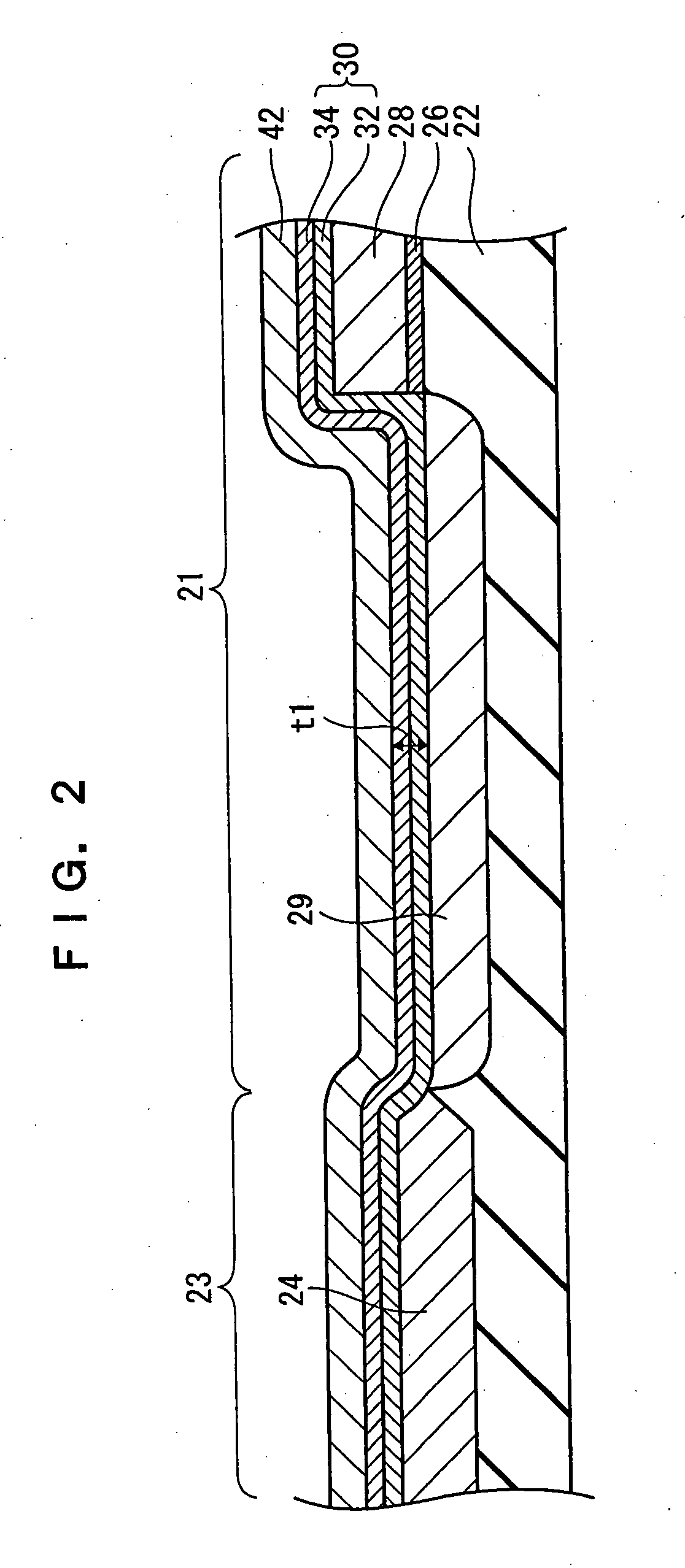Semiconductor device fabrication method
- Summary
- Abstract
- Description
- Claims
- Application Information
AI Technical Summary
Benefits of technology
Problems solved by technology
Method used
Image
Examples
first embodiment
[0038] A semiconductor device fabrication method of a first embodiment will be described with reference to FIGS. 1 to 7. FIGS. 1 to 7 are process diagrams for explaining the semiconductor device fabrication method of the first embodiment, and are shown cut along a sectional plane.
[0039] Firstly, an underlying structure 20 is prepared. The underlying structure 20 is provided with a silicon substrate 22, an element isolation layer 24 formed on the silicon substrate 22, and a gate oxide film 26 and a gate electrode 28 which are layered in that order on one major surface of the silicon substrate 22.
[0040] An element isolation region 23 and a MOS transistor formation region 21 are provided at the underlying structure 20. The element isolation region 23 is a region at which the element isolation layer 24 is formed, and the MOS transistor formation region 21 is a region defined by the element isolation region 23. The gate oxide film 26 and the gate electrode 28 are formed on the underlyi...
second embodiment
[0056] A semiconductor device fabrication method of a second embodiment will be described with reference to FIGS. 8 and 9. FIGS. 8 and 9 are process diagrams for explaining the semiconductor device fabrication method of the second embodiment, and are shown cut along a sectional plane.
[0057] Steps up to the formation of the silicon nitride layer are similar to those described with reference to FIGS. 1 and 2 and FIGS. 3 and 4, and will not be described here. In the second embodiment however, the thickness of the resistance isolation oxide layer 34 is not limited to 20±5 nm, and may be around 70 nm, similarly to a conventional case. When the thickness of the resistance isolation oxide layer 34 is greater, the effect of preventing the phosphorus and boron included in the BPSG layer from reaching the transistor is enhanced.
[0058] After a silicon nitride layer 51 has been formed, an aperture portion 55, which exposes the silicon oxide layer 30, is formed in the silicon nitride layer 51....
PUM
 Login to View More
Login to View More Abstract
Description
Claims
Application Information
 Login to View More
Login to View More - R&D
- Intellectual Property
- Life Sciences
- Materials
- Tech Scout
- Unparalleled Data Quality
- Higher Quality Content
- 60% Fewer Hallucinations
Browse by: Latest US Patents, China's latest patents, Technical Efficacy Thesaurus, Application Domain, Technology Topic, Popular Technical Reports.
© 2025 PatSnap. All rights reserved.Legal|Privacy policy|Modern Slavery Act Transparency Statement|Sitemap|About US| Contact US: help@patsnap.com



